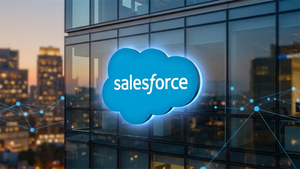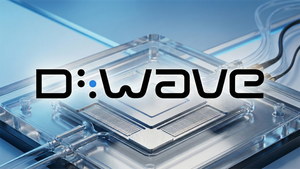
Cupertino, CA – Apple Inc. (NASDAQ: AAPL) has once again demonstrated its formidable market prowess, reporting a record-shattering fiscal third quarter for 2025. The tech giant announced an unprecedented June quarter revenue of $94.0 billion, a robust 10% year-over-year increase, significantly propelled by double-digit growth across its flagship iPhone, revitalized Mac lineup, and increasingly vital Services segment. This stellar performance, alongside diluted earnings per share (EPS) of $1.57, up 12% year-over-year, underscores Apple's enduring consumer appeal and the formidable strength of its integrated ecosystem.
The immediate implications of this impressive financial showing are manifold, solidifying Apple’s leadership position in the global technology landscape and injecting a fresh wave of optimism into the broader market. With strong consumer demand for its latest iPhone 16 models and a resurgence in Mac sales driven by the M4 MacBook Air, Apple’s results suggest a resilient consumer electronics market. Furthermore, the sustained growth of its high-margin Services division validates the company's strategic pivot towards recurring revenue streams, promising continued profitability and financial flexibility to fuel ambitious initiatives, particularly in the burgeoning field of artificial intelligence.
Apple's Q3 2025 Triumph: A Deep Dive into Record Growth
Apple's fiscal Q3 2025, ending June 28, 2025, has been nothing short of a triumph, with the company reporting record revenue of $94.0 billion, marking a significant 10% year-over-year increase. This remarkable performance was primarily fueled by stellar contributions from its three core growth engines: iPhone, Mac, and Services. The iPhone segment, a perennial powerhouse, surged to $44.6 billion in revenue, reflecting a robust 13% year-over-year increase, largely attributed to the "incredible popularity" of the iPhone 16 family and a record number of customers upgrading their devices globally. This indicates a strong upgrade cycle and sustained brand loyalty among its vast user base.
The Mac segment staged an impressive comeback, with revenue climbing 15% year-over-year to $8.0 billion. This resurgence was predominantly driven by strong demand for the innovative M4 MacBook Air models, signaling that Apple's strategic investment in its proprietary silicon continues to resonate with consumers and professional users alike, offering compelling performance and efficiency advantages. Complementing this hardware success, the Services division achieved an all-time record revenue of $27.4 billion, a 13% increase from the prior year. This consistent growth, now constituting approximately 29% of Apple's total revenue, is a testament to the expanding installed base of active devices and robust engagement across its digital platforms, including the App Store and various cloud services, providing a stable, high-margin revenue stream.
While these core segments flourished, not all product categories experienced similar growth. iPad revenue saw an 8.1% decline to $6.58 billion, and Wearables, Home, and Accessories revenue decreased by 8.6% to $7.4 billion. Despite these mixed performances, Apple demonstrated geographic strength, reporting growth in every region, with notable increases in Asia Pacific (20%) and Japan (13%). Even Greater China, a market often subject to volatility, showed a healthy rebound with a 4% increase in revenue. CEO Tim Cook acknowledged that approximately one percentage point of the overall 10% revenue growth was due to "pull-forward" sales, as consumers made purchases in anticipation of potential tariff increases. The company also absorbed $800 million in tariff-related costs during the quarter and anticipates this impact to rise to $1.1 billion in the September quarter, highlighting ongoing global trade complexities. In response, Apple has been proactive in diversifying its supply chain, with the majority of US-bound iPhones now manufactured in India, and other products from Vietnam, signaling a strategic shift away from over-reliance on any single manufacturing hub.
The initial market reaction to Apple's earnings report was overwhelmingly positive, with analysts commending the company's ability to drive growth in a challenging economic environment. The strong performance of the iPhone 16 and M4 MacBook Air, coupled with the continued expansion of high-margin services, provided a significant boost to investor confidence. Key players involved include Apple's executive leadership, notably CEO Tim Cook and CFO Luca Maestri, whose strategic decisions and execution have guided the company to these results. Stakeholders range from shareholders who benefit from increased earnings and potential dividend increases, to suppliers like Foxconn (TWSE: 2317) and TSMC (TWSE: 2330) who benefit from high production volumes, and developers who thrive within the robust App Store ecosystem. The successful unveiling of "Apple Intelligence" at WWDC25, preceding these results, likely also contributed to positive sentiment, suggesting that Apple's aggressive push into artificial intelligence is being well-received and sets a promising stage for future innovations.
Market Winners and Losers in Apple's Wake
Apple’s stellar fiscal Q3 2025 performance is creating distinct winners and losers across the technology landscape, reaffirming the company’s powerful influence over its extensive ecosystem of suppliers, competitors, and partners. Unsurprisingly, Apple (NASDAQ: AAPL) itself stands as the primary beneficiary, with its robust earnings reinforcing investor confidence, likely leading to a sustained increase in stock price and market capitalization. This financial strength provides Apple with formidable resources for further innovation, aggressive marketing, and strategic investments, solidifying its dominant market position.
A significant cohort of winners emerges from Apple's vast supply chain. Contract manufacturers such as Foxconn (TWSE: 2317) and Pegatron, which handle the assembly of Apple's devices, will experience increased production volumes and revenue due to heightened demand for iPhones and Macs. Component manufacturers also stand to gain substantially; Corning Incorporated (NYSE: GLW), a key provider of Gorilla Glass, will benefit from increased iPhone sales, while Jabil (NYSE: JBL), which still manufactures various components for Apple, will see a positive impact on its business. Furthermore, the strong performance of Macs and iPhones translates into higher demand for a myriad of semiconductor suppliers across Taiwan, Japan, South Korea, and the U.S., which produce the processors, memory, and integrated circuits essential for Apple’s hardware.
The double-digit growth in Apple's Services segment also extends benefits to a range of software and service partners. Application developers, in particular, will see an expanded user base from strong iPhone and Mac sales, potentially boosting app downloads, subscriptions, and in-app purchases through the App Store. Financial service partners, including Goldman Sachs Bank USA (NYSE: GS) for the Apple Card and Savings accounts, and Green Dot Bank (NYSE: GDBC) for Apple Cash services, will also see increased engagement. Moreover, enterprise management solutions like Mosyle, which provide device management and security for Apple devices in business settings, are likely to experience increased demand as more Apple products are adopted within corporations.
Conversely, Apple's triumph often comes at the expense of its direct competitors. Smartphone manufacturers, especially Samsung, face intense pressure. Apple is even poised to surpass Samsung as the largest smartphone manufacturer in 2025, meaning a strong iPhone quarter could significantly erode Samsung's market share and profitability in the high-end segment. Other smartphone players such as Xiaomi (HKEX: 1810), Google (NASDAQ: GOOGL) with its Pixel line, and OnePlus also contend with Apple's aggressive strategies and innovation, requiring them to accelerate their own development to remain competitive. In the PC market, rivals like Microsoft (NASDAQ: MSFT), Dell (NYSE: DELL), HP (NYSE: HPQ), Lenovo (HKEX: 0992), and Asus (TWSE: 2357) could find their market share challenged by the robust sales of Apple's M4-powered MacBooks. Similarly, in the wearables sector, companies like Samsung, Google Fitbit, and Garmin (NYSE: GRMN) will face intensified competition from strong Apple Watch sales.
Beyond direct competition, smaller tech companies and innovators face inherent challenges. Apple's immense financial resources and platform control, particularly within the App Store, can create substantial barriers to entry and growth. Smaller software firms may struggle for visibility and market penetration, potentially limiting overall innovation and consumer choice. Furthermore, these smaller entities, heavily reliant on Apple's platforms, remain vulnerable to changes in Apple’s policies or algorithms, which can profoundly impact their business models and revenue streams.
A New Era of Influence: Industry Impact and Broader Implications
Apple's commanding fiscal Q3 2025 results are not merely a reflection of its individual success but serve as a potent indicator of deeper, transformative currents within the technology industry, particularly regarding artificial intelligence (AI), the trend of premiumization, and the enduring growth of the services sector. The record $94.0 billion revenue, buoyed by double-digit growth in iPhone, Mac, and Services, strategically positions Apple at the forefront of these shifts, while simultaneously exposing it to intensifying scrutiny and competition.
Apple's aggressive pivot into AI is arguably the most significant industry trend highlighted by these results. CEO Tim Cook's emphasis on "significant growth" in AI investments, including strategic acquisitions and the launch of over 20 "Apple Intelligence" features in 2025 – such as visual intelligence and writing tools – signals a pivotal moment for the company. The integration of Google's (NASDAQ: GOOGL) Gemini into Siri and significant investments in its Private Cloud Compute (PCC) initiative underscore a strategy to embed AI deeply and privately across its ecosystem, aiming to enhance user engagement and drive future device upgrades. This move intensifies the AI race, prompting rivals like Microsoft (NASDAQ: MSFT) and Nvidia (NASDAQ: NVDA) to double down on their own AI advancements, creating a fiercely competitive landscape where AI innovation becomes the primary battleground for market leadership.
The company's strong performance also reinforces the industry-wide premiumization trend. Consumers are increasingly demonstrating a willingness to invest in higher-quality, feature-rich products, a sentiment Apple has capitalized on with its iPhone 16 family and M4 MacBook Air models. This is further exemplified by Apple's strategic pricing for the upcoming iPhone 17, which removed lower storage options from Pro models and introduced an ultra-slim iPhone 17 Air at a premium price point. This trend extends beyond smartphones to smart TVs and wearables, indicating a broader consumer preference for advanced specifications and cutting-edge features. For competitors, this means a necessity to elevate their own product offerings and differentiate through innovation to capture discerning consumers, rather than solely competing on price.
Furthermore, the sustained double-digit growth of Apple's Services segment to a record $27.4 billion highlights a critical industry shift towards recurring revenue models. This "stickiness" of the Apple ecosystem, driven by subscriptions and platform engagement, is a blueprint for other hardware-centric companies seeking to build more resilient and profitable business models. The continued expansion of this high-margin segment reinforces the value of an integrated hardware and software approach, but also exposes Apple to increasing regulatory scrutiny. The U.S. Department of Justice (DOJ) and the European Union, through the Digital Markets Act (DMA), are intensely investigating Apple's App Store policies, alleging monopolistic practices and imposing significant fines. These regulatory actions, including a criminal contempt investigation referral in May 2025, indicate a sustained challenge to Apple's "walled garden" approach and could force fundamental changes to its business model, potentially impacting its lucrative service margins.
Historically, Apple's current situation draws parallels to past antitrust battles against tech giants like Microsoft in 1998 and even IBM in earlier decades. These precedents suggest that regulatory bodies are increasingly willing to challenge the concentrated market power and platform control of dominant tech companies. Moreover, Apple continues to navigate complex geopolitical landscapes, absorbing $800 million in tariff-related costs in Q3 2025 and proactively diversifying its supply chain by shifting iPhone production to India. This strategic manufacturing shift is a direct response to global trade tensions and regulatory uncertainties, setting a precedent for multinational corporations to re-evaluate and de-risk their global supply chains. Emerging legal challenges around AI development and intellectual property, exemplified by a recent copyright lawsuit against Apple for using copyrighted material to train its AI systems, also underscore the evolving legal and ethical frameworks that will shape the future of technology.
The Road Ahead: Navigating Innovation and Challenge
Apple's strong fiscal Q3 2025 results provide a robust springboard, but the path forward will demand adept navigation of both unprecedented innovation and escalating challenges. In the short term, Apple is poised to significantly accelerate its AI integration and development. With a goal of 250 million devices featuring comprehensive AI capabilities by the end of 2025, the company will focus on privacy-first, on-device processing via its Neural Engine and custom AI chips, codenamed "Project ACDC." Expect to see updates bringing more proactive, cross-app intelligence to core services like Maps and Messages, potentially cementing Apple's AI leadership through seamless user experiences rather than raw generative power alone. A strong financial footing from Q3 could also see Apple intensify its reported acquisition strategy for generative AI companies, rapidly bridging any perceived gaps in the fiercely competitive AI landscape.
Looking further out, Apple's long-term trajectory hinges on its ability to define and dominate emerging categories, particularly spatial computing. While the initial Vision Pro is building an ecosystem, an upgraded Vision Pro M5 Version is slated for mass production in Q3 2025, with a lighter, more affordable Vision Air headset by 2027 potentially revolutionizing enterprise XR. Beyond 2027, the vision includes multiple AR/VR products, including everyday smart glasses. Simultaneously, the pivotal role of AI will deepen across the entire Apple ecosystem, with a significant overhaul of operating systems for Mac and iPhone in 2025, streamlining user experience and integrating its mixed reality headset OS. A major revamp of Siri, expected by early 2026, aims to deliver a smarter, more context-aware assistant, leveraging leading AI models and driving substantial upgrade cycles as new "Apple Intelligence" features demand more powerful M4 chips and newer devices.
Emerging markets represent both significant opportunities and strategic challenges. India is rapidly ascending as a critical market, projected to be Apple's third-largest globally by 2026, with local sales potentially growing by 20%. Apple is actively expanding its retail footprint and implementing financial inclusivity programs to capture a growing demographic of consumers switching from Android to iOS. However, challenges persist in key markets like China, where intensified competition from local manufacturers such as Huawei, alongside geopolitical tensions and trade policy changes, pose substantial risks to Apple's market share and supply chain stability. Apple's ongoing diversification of its manufacturing base to India and Vietnam is a crucial adaptation to mitigate these geopolitical risks and build a more resilient global operational foundation.
Strategically, Apple must adeptly manage the perception of "lagging" in generative AI, despite its privacy-first approach. Delivering on delayed promises for significant Siri AI upgrades and enhancing "Apple Intelligence" features will be critical to meet user and investor expectations. This might necessitate more aggressive partnerships or acquisitions in the AI space. Concurrently, navigating the increasingly complex global regulatory landscape, particularly antitrust challenges to its App Store business model, will demand adaptive policies to comply with evolving regulations while sustaining the profitability of its lucrative Services revenue. The outcomes could range from a continued trajectory towards a $5 trillion market capitalization if Apple successfully executes its AI and spatial computing strategies, to a moderate growth scenario if AI adoption is slower than anticipated and regulatory interventions dampen service profitability. A challenging scenario could see market erosion if AI advancements fail to differentiate and regulatory pressures severely impact its core business.
Conclusion: Apple's Enduring Strength in a Transformative Era
Apple's fiscal Q3 2025 results represent far more than just a stellar financial quarter; they underscore the company's enduring resilience, strategic foresight, and unparalleled brand loyalty in a rapidly evolving technological landscape. With record revenue of $94.0 billion and diluted EPS of $1.57, driven by robust double-digit growth in iPhone, Mac, and Services, Apple has once again demonstrated its capacity to defy market headwinds and reinforce its dominant position. The strategic significance of these results lies in their validation of Apple's ecosystem approach, which continues to generate high-margin recurring revenue through its Services segment, while its hardware innovations, particularly the iPhone 16 series and M4 MacBook Air, maintain strong consumer demand.
Moving forward, the market will assess Apple's ability to seamlessly integrate "Apple Intelligence" across its vast installed base and translate these advanced AI features into compelling reasons for device upgrades, particularly for the upcoming iPhone 17 lineup. The success of its AI strategy is paramount for maintaining competitive edge against rivals like Meta (NASDAQ: META) and Microsoft (NASDAQ: MSFT), who are also heavily invested in AI. Continued expansion in crucial emerging markets such as India and a rebound in Greater China will be vital for sustained growth, offering new avenues for market penetration amidst saturation in developed regions.
Investors should closely watch the ongoing rollout of "Apple Intelligence" features and their real-world impact on user engagement and device refresh cycles. The company's efforts to further diversify its supply chain away from geopolitical hotspots, particularly its increased manufacturing presence in India and potential for more U.S. production, will be key indicators of operational resilience and cost management. Furthermore, the evolving regulatory scrutiny, particularly concerning App Store policies, remains a critical area to monitor, as legal and policy changes could potentially impact Apple's lucrative Services revenue. Despite some prior market jitters, Apple's robust Q3 2025 performance and clear strategic direction in AI and spatial computing have largely assuaged investor concerns, with analysts maintaining positive outlooks and raised price targets. However, the sheer scale of Apple's valuation and the inherent complexities of its global operations mean that vigilance against competitive pressures and regulatory headwinds will be crucial for sustained shareholder value in the transformative months and years to come.





